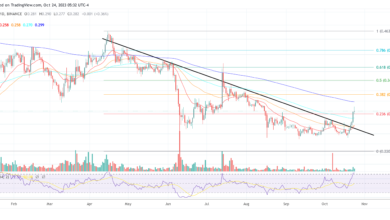Stablecoins are here to stay, but lopsided growth won’t help

- Nearly 75% of all transactions on centralized crypto exchanges involved a stablecoin.
- The lopsided growth sparked concerns about weaknesses in the broader ecosystem.
Stablecoins have proven to be a popular tool in the Web3 domain over the past few years. By combining the benefits of cryptocurrencies while maintaining a stable value, they have emerged as the holy grail for new-age financial investors.
This unique ability has cemented stablecoins as the primary way for traders on non-fiat crypto exchanges to enter and exit trades, thereby acting as a bridge between traditional finance and crypto ecosystems.
Stablecoins increase their market share
According to a report by digital assets data provider Kaiko dated 13 July, nearly 75% of all transactions on centralized crypto exchanges (CEX) involved a stablecoin.
Although significantly down from the all-time highs seen in March earlier this year, the market share of stablecoins has increased by a sizable 10% since 2020.

Source: Kaiko
While the dominance of fiat currencies on CEXs was clearly waning, the primary driver behind the surge in stablecoin volumes was Binance’s [BNB] zero-fee trading program introduced in July last year. As many as 13 spot trading pairs of Bitcoin [BTC] were exempted from exchange fees.
As per an earlier report by Kaiko, zero-fee trade volume accounted for nearly 66% of total volume.
However, as evident in the graph above, as soon as this promotion ended in March 2023, there was a sharp decline in the overall trading volume, and consequently stablecoins’ market share.
Nonetheless, the crypto market’s rebound in 2023 has put the spotlight back on these stable assets. The cumulative trade volume involving the big five – Tether [USDT], USD Coin [USDC], DAI, Binance USD [BUSD] and TrueUSD [TUSD], in 2023 – was greater than $3 trillion, as per the report.
Asymmetrical growth a cause for worry?
The largest stablecoin by market cap, USDT, enjoyed a massive 70% market share. While this mirrored USDT’s supremacy, the lopsided distribution highlighted concerns about the weaknesses in the broader stablecoin ecosystem.

Source: Kaiko
Incidents of depeggings and regulatory clampdowns have stunted the growth of other stablecoins in the market.
Earlier in February, Binance USD [BUSD] depegged from its dollar value. This happened following orders by a New York-based regulator, which instructed the issuing company Paxos to halt the minting of new tokens. Since then, about 75% of BUSD’s market share has been wiped out as of this writing.
This was followed by the biggest depegging of 2023 thus far when USD Coin [USDC], the second-largest stablecoin by market cap, dropped to a low of 87 cents from its ideal value of $1.
The event caused mayhem in the market, severely impacting investors’ portfolios. USDC’s market cap has shrunk by 37% since this fiasco.
Moreover, the depeg resulted in a domino effect on the algorithmic stablecoin DAI as USDC formed the majority of its collateral reserves. DAI lost nearly $2 billion of its market value.

Source: Glassnode
The shining spots
Tether, on the other hand, grew from strength to strength and, despite minor hitches, maintained its shine in the stablecoin ecosystem. Its market valuation surged by 25% on a year-to-date (YTD) basis, as investors reposed their confidence amidst negative signals from rivals.
Another success story has been that of TUSD. The stablecoin, propped up by Binance after the failure of BUSD, showed exciting results. TUSD’s market cap has more than tripled YTD and its market share has surged from 1% to 19%.
The promotional tactic used by Binance to remove trading fees for its BTC-USD pair was a key factor in aiding this surge. After seeing encouraging results, Binance extended this service to all TUSD spot trading pairs beginning 30 June.
CEX over DEX
Despite titanic events like FTX collapse and USDC depegging, decentralized exchanges (DEX) still accounted for a paltry, 5% of the total stableccoin trading volume, as per the report. While volumes did spike to 45% during the March banking crisis, it proved to be just an aberration.
Higher liquidity, faster transaction times, and user-friendly interfaces lead traders to choose centralized exchanges over decentralized counterparts.

Source: Kaiko
The growing relevance of stablecoins, especially USDT, was reflected in their growing demand as a safe-haven asset in countries going through political and financial strife. However, countries like India have expressed strong reservations around its adoption.
As per a report by The Hindu, the Deputy Governor of India’s central bank said that stablecoins are useful to only a few countries while in other cases they could have adverse impact on local currencies.





